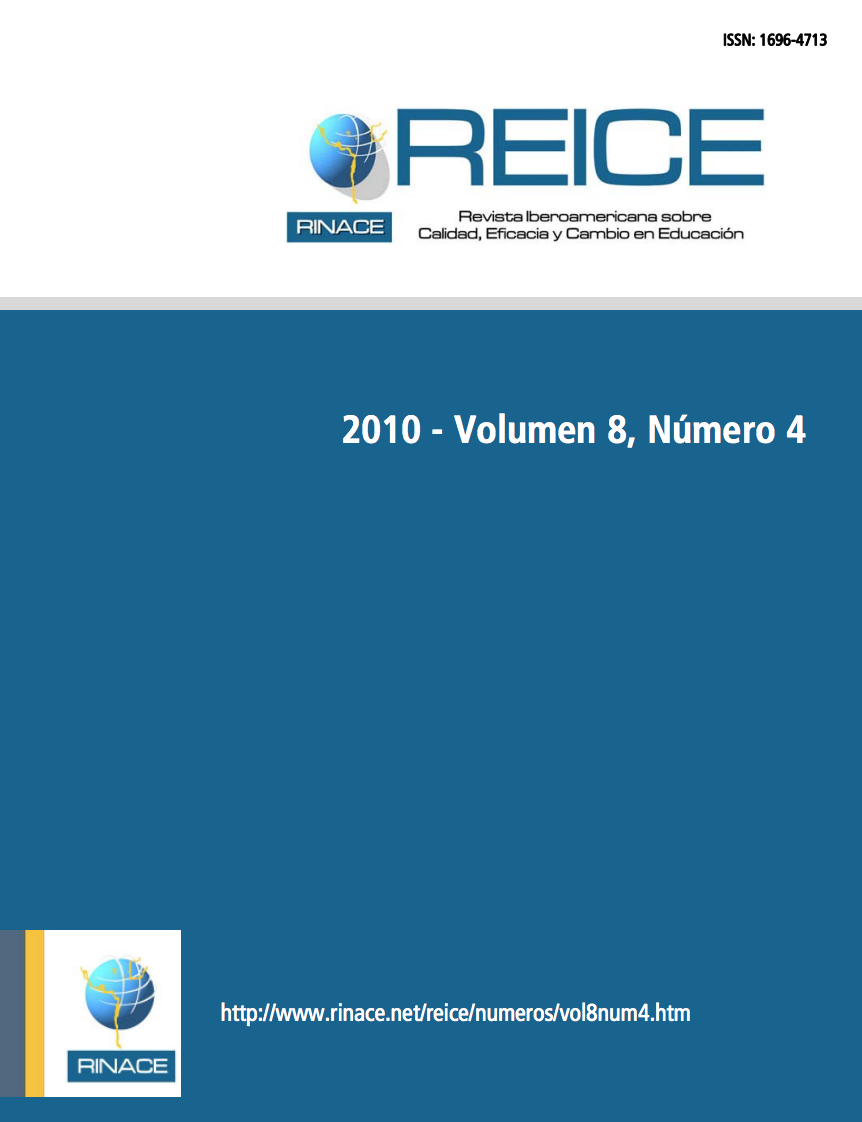The Use of the CIPP Model in the Evaluation of Social Programes: The Case of the Project Educating for Liberty (SECAD/MEC)
Keywords:
Evaluation of programs, education in penitentiaries, CIPP ModelCopyright (c) 2023 REICE. Revista Iberoamericana sobre Calidad, Eficacia y Cambio en Educación

This work is licensed under a Creative Commons Attribution-NonCommercial-NoDerivatives 4.0 International License.
Abstract
The article relates the use of the CIPP model to evaluate the 2nd Cycle of the Project Educating for Freedom (SECAD/MEC), that was carried out in six Brazilian States, and considered the following four dimensions: the Context (macro, meso and micro), the Resources (human and material), the Processes and the Products . Thus, an ex post-facto study was design to obtain relevant data on the referred dimensions, based in the following audiences: managers and penitentiary agents; professors, imprisoned students, and state technicians involved in prison education. The results show that the social effectiveness of the educational activities is imprinted in the qualitative changes on the inmates, changes, which are verified by the diverse social protagonists close to the imprisoned students.
Downloads
References
Andriola, W.B. (1999). Evaluación: La vía para la calidad educativa. Ensaio. Avaliação e Políticas Públicas em Educação, Rio de Janeiro, 7(25), pp. 355-368.
Andriola, W.B. (2001). Avaliação dos Programas Estaduais de Qualificação Profissional (PEQ's): Uma Revisão Conceitual do Modelo 3ER. Ensaio. Avaliação e Políticas Públicas em Educação, Rio de Janeiro, 9(30), pp. 43-56.
Bisquerra, R. (2004). Metodología de la Investigación Educativa. Madrid: La Muralla.
Brasil (2006). Educando para a Liberdade. Trajetória, debates e proposições de um projeto para a Educação nas prisões brasileiras. Brasília: UNESCO, Governo Japonês, MEC, MJ.
Burrows, S. Daniel Stufflebeam’s Contribution to Programme Evaluation. University of the Witwatersrand. Disponível em: <http://www.aseesa-edu.co.za/asbull.html>. Acessado em: 21/06/2008.
Campestrini, B.B. y Barth, E M.L. (2003). In Barth, E.M.L. et al. (Org). Inclusão Social no Brasil - Experiências em programas de reabilitação prisional a partir do I Fórum Internacional de Ações Sócio-educativas nas Prisões. Florianópolis: Agbus, pp.131-142.
Carlos Gil, A.C. (1999). Métodos e Técnicas da Pesquisa Social. São Paulo: Editora Atlas.
Fitzpatrick, J.L., Sanders, J.R. y Worthen, B.R. (2004). Program Evaluation. Alternative Approaches and Practical Guidelines. Third Edition. San Francisco: Pearson Education.
Kerlinger, F. y Lee, H.B. (2002). Investigación del comportamiento: métodos de investigación en ciencias sociales. México: McGraw Hill.
Lima, C.I., Cavalcante, S.M.A., Andriola, W.B. (2008). Avaliação Educacional e o Modelo CIPP. In: IV Congresso Internacional de Avaliação Educacional, 2008, Fortaleza. Anais do IV Congresso Internacional de Avaliação Educacional. Fortaleza: IMPRECE. pp. 1076-1091.
Rangel, H. (2007). Estratégias sociais e educação prisional na Europa: visão de conjunto e reflexões. Revista Brasileira de Educação, 34(12) Rio de Janeiro, pp. 81-93.
Robinson, B. (2002). The CIPP approach to evaluation. COLLIT. Maio.
Stufflebeam, D. (2003). The CIPP Model for Evaluation: An update, a review of the model’s development, a checklist to guide implementation. Paper read at Oregon Program Evaluators Network Conference, at Portland, Oregon. Disponível em: <http://www.wmich.edu/evalctr/pubs/CIPP-ModelOregon10-03.pdf>. Acessado em: 21/06/2008.
Stufflebeam, D. (s.d.). Strategies for Institutionalizing Evaluation. Western Michigan University: The Evaluation Center. Disponível em: <http://www.wmich.edu/evalctr/pubs/ops/ops18.html>. Acessado em: 18/11/2004.
Vianna, H. M. (2000). Avaliação Educacional. Teoria, Planejamento e Modelos. São Paulo: IBRASA.
